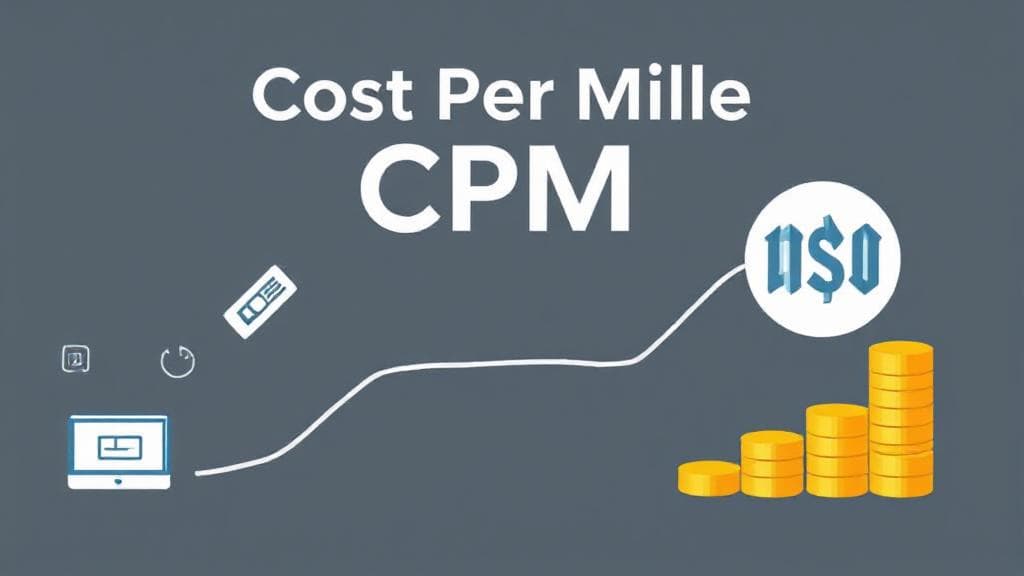What is CPM?
CPM stands for Cost Per Mille, with "mille" being Latin for "thousand." In advertising, CPM refers to the cost of 1,000 ad impressions on a web page. If a website publisher charges $2.00 CPM, that means an advertiser must pay $2.00 for every 1,000 impressions of their ad.
Calculating CPM
The formula for calculating CPM is straightforward:
For example, if you spent $500 on a campaign that generated 250,000 impressions:
Advantages and Disadvantages
Advantages of CPM Advertising
- Brand Awareness: Ideal for campaigns focused on increasing visibility
- Predictable Costs: Easy to budget and forecast expenses
- Simplicity: Straightforward pricing model that's easy to understand
- Volume: Effective for reaching large audiences quickly
Disadvantages of CPM Advertising
- No Performance Guarantee: Impressions don't guarantee engagement
- Potential for Fraud: Vulnerable to invalid traffic and bot activity
- Less Direct ROI: Harder to measure direct conversion impact
- Quality Concerns: Not all impressions are equally valuable
Industry Benchmarks
CPM rates vary significantly across different platforms:
- Facebook: $7-$10
- Instagram: $6-$9
- LinkedIn: $6-$12
- Google Display Network: $2-$4
Factors Affecting CPM Rates
- Target Audience: More specific targeting typically increases CPM
- Industry: Competitive sectors often have higher CPMs
- Season: Holiday periods usually see increased rates
- Ad Quality: Better-performing ads may achieve lower CPMs
- Platform: Premium platforms command higher rates
CPM vs. Other Pricing Models
| Model | Description | Best For |
|---|---|---|
| CPC | Cost per click | Direct response |
| CPA | Cost per action | Conversion-focused |
| CPV | Cost per view | Video campaigns |
| CPE | Cost per engagement | Interactive content |
How to Optimize CPM Campaigns
To get the most out of your CPM campaigns, consider the following strategies:
- Target the Right Audience: Use demographic and interest-based targeting to ensure your ads are shown to the most relevant audience
- Optimize Ad Creatives: High-quality, engaging ad creatives can increase the effectiveness of your CPM campaigns
- Monitor and Adjust: Regularly review your campaign performance and make necessary adjustments
- Verify Ad Placement: Ensure ads appear in brand-safe environments
- Implement frequency capping: Control how often users see your ads
"Half the money I spend on advertising is wasted; the trouble is I don't know which half." - John Wanamaker
Future of CPM Advertising
The digital advertising landscape continues to evolve with:
- Advanced targeting capabilities
- Improved fraud detection
- Enhanced measurement tools
- Privacy-focused solutions
- AI-driven optimization
For more detailed insights into CPM and other advertising metrics, consider exploring resources like Google Ads Help, Facebook Business, and the Interactive Advertising Bureau (IAB).
Understanding CPM is essential for digital marketers, but it should be part of a comprehensive measurement strategy. By combining CPM with other metrics and maintaining focus on overall campaign objectives, advertisers can better optimize their digital advertising investments.
